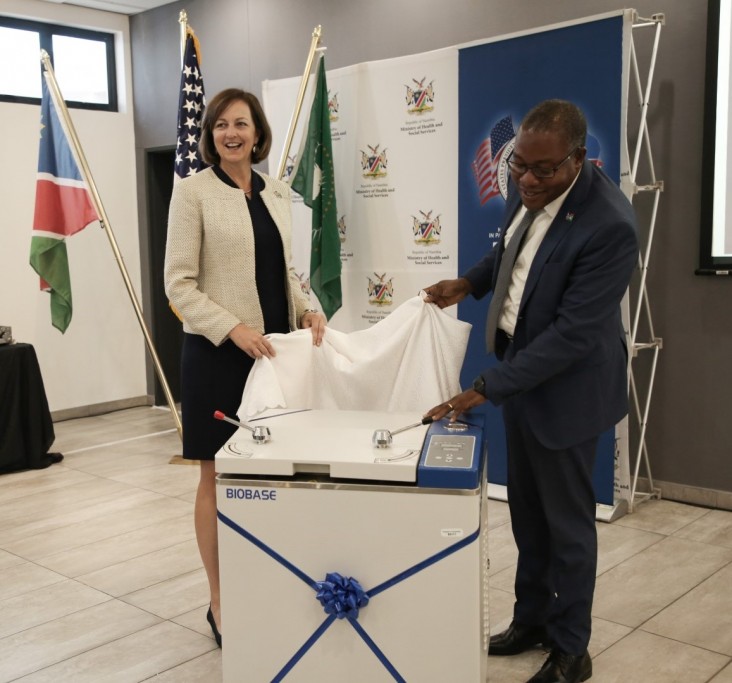Speeches Shim

- Mr. Ben Nangombe, Executive Director of the Ministry of Health and Social Services;
Mrs. Anne-Marie Nitschke, Director of Special Programs, MOHSS; - Ms. Elizabeth Muremi, Health Director of the Khomas
Region; - Other Ministry and Government representatives;
- Colleagues from U.S. agencies and implementing partners;
- Health care workers;
- Members of the media;
- Ladies and gentlemen;
Good afternoon!
I am very pleased to join you today to announce an expansion in the support that the United States government provides the Ministry of Health in the fight against HIV/AIDS. Today, we are launching a new program that will make voluntary circumcision available to even more men and boys throughout Namibia.
What does voluntary medical male circumcision, or VMMC, have to do with HIV? Well, simply: The risk for circumcised men to contract HIV is 60 percent lower in comparison to non-circumcised men. And a reduction of new infections in men also means that women will have a reduced risk of being infected with HIV by their partners.
In short: The more men that get circumcised, the lower the risk of spreading the HIV virus. Therefore, the importance of VMMC as a critical component for breaking the cycle of HIV infection cannot be overstated.
I am proud to be here with you today to launch a new PEPFAR-funded USAID program called Scale up Access For Expanded Voluntary Medical Male Circumcision services in the country – in short,
SAFE VMMC
The United States will fund this activity with up to US$33.5 million (close to half a billion Namibia dollars) over the next five years. SAFE VMMC is being implemented by our partner Abt Associates to provide comprehensive VMMC services to Namibian boys and men across 10 regions.
Thanks to the leadership of the Ministry of Health and Social Services and with funding from programs such as PEPFAR and the Global Fund, more Namibian men and boys can choose to better protect themselves through voluntary circumcision.
I would like to reiterate that VMMC is only one of many proven interventions in the HIV prevention toolbox. Others include pre-exposure prophylaxis, or PrEP, and of course the use of condoms. Circumcision does not substitute for a condom, which still provides the best protection in every respect.
The SAFE VMMC program will help Namibia’s private and public health sector overcome barriers to VMMC services that still exist, as well as address societal misconceptions about circumcision in general.
SAFE VMMC represents a significant expansion of previous successful circumcision programs in urban areas. Now, young men in rural communities also will have access to VMMC services. Our goal is to support the Ministry of Health in reaching as many Namibian men as possible to achieve another major step on the path to HIV epidemic control.
Master of ceremonies, ladies and gentlemen, I am here to assure you of my government’s continued support in this challenging task. The partnership between the United States and Namibia is strong – and together, I am convinced, we will soon achieve an AIDS-free Namibia.
Thank you.

Comment
Make a general inquiry or suggest an improvement.